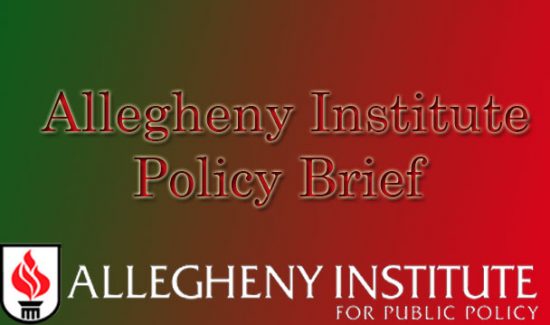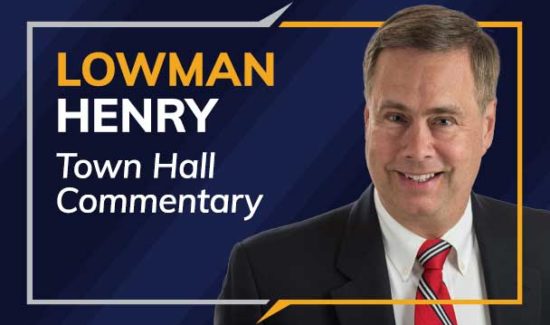Pension Reforms Heads to Wolf
Bill Establishing 401(k)-Type Component Heads to Governor
June 8, 2017, Harrisburg, Pa.â€"In an overwhelming, bipartisan vote, the state House today voted 143-53 to approve transformative pension reform legislation hailed as a part of a “major turn-around among states†by the Pew Charitable Trusts. The bill now heads to Gov. Wolf, who has indicated he will sign it.
SB 1, sponsored by Senate Majority Leader Jake Corman, begins to transition Pennsylvania away from the current, unsustainable traditional pension system to a system that provides portability for workers and predictability for taxpayers.
“This is a turning point for Pennsylvania,†commented Nathan Benefield, vice president and COO for the Commonwealth Foundation. “Ten years ago, many denied a pension crisis existed, and just two years ago, Gov. Wolf vetoed pension reform. But grassroots momentum for reform has been growing. Today, we saw the first results of this momentum, with lawmakers making reform a priority and Governor Wolf pivoting from staunch opposition to vocal support.â€
SB 1 will enroll new state employees and school teachers in a side-by-side hybrid plan consisting of a defined benefit component and a 401(k)-style component. New employees could also choose to enroll solely in the 401(k)-style plan, and current employees could choose to opt in to the new system. According to a report from the state’s Independent Fiscal Office, the enacted reform will reduce taxpayers’ pension risk by approximately two-thirds.
Pennsylvania’s unfunded pension liabilities skyrocketed from $7.6 billion in 2006 to $71 billion by market value in 2016. Though SB 1 does not address this debt, the Pew Charitable Trusts notes this reform will “mitigate more risk†than reforms passed in any other state.
“For years, government union leaders fought reform efforts tooth and nail,†Benefield continued. “As a result, their own members’ retirements have been put at risk, and taxpayers have suffered burdensome property tax hikes. Today’s reform illustrates real progress can be made in the face of powerful and entrenched opposition.
“While more work remains to fully address the pension problem, including tackling the debt, this reform is a major step toward ensuring that in 20 years, we won’t look back and say, ‘If only we had acted.’ We applaud lawmakers for passing this reform and look forward to Gov. Wolf signing it into law.â€
Additional details on the specific features of Pennsylvania’s reform can be found here, and see below for a brief timeline of Pennsylvania’s pension reform efforts.
Nathan Benefield and other Commonwealth Foundation experts are available for comment. Please contact Gina Diorio at 862-703-6670 or [email protected] to schedule an interview.
# # #
The Commonwealth Foundation transforms free-market ideas into public policies so all Pennsylvanians can flourish.
Pension Reform Timeline, 2001-2017
2001
• Legislators and Gov. Tom Ridge enact Act 9, increasing benefits for all existing and new employees, immediately adding $8.2 billion to the unfunded liability and taking a “holiday†from making payments into the pension funds.
2002
• Lawmakers enact Act 38, increasing benefits for those already retired, at a cost of $1.75 billion.
2003
• Faced with stock market losses and rising unfunded liability, lawmakers and Gov. Ed. Rendell enact Act 40, which continues the pension payment “holiday†for an additional 10 years and stretches out payments for investment losses and new benefits to 30 years. This effectively adds billions more in costs, mostly paid by future generations.
2007
• State Rep. Scott Boyd and Sen. Pat Browne first introduce pension reform legislation.
2009
• State Treasurer Rob McCord proposes borrowing money through state bonds to put into the pension funds and invest in the stock market. This proposal fails.
2010
• A defined contribution pension proposal fails to advance out of Senate committee.
• Instead, the Legislature and Gov. Rendell enact Act 120â€"which caps the pension contribution increases, delaying the “day of reckoning†by shifting those costs off onto future generations. The bill also reduced the multiplier (defined benefit) for new employees.
2013
• Gov. Tom Corbett first announces his own pension reform proposal.
• Neither the House nor the Senate brings pension reform to their respective floors for a vote.
2015
• Senate Republicansâ€"with a larger majority and new leadershipâ€"decide to make pension reform a top priority.
• The House and Senate pass SB 1, a hybrid pension plan, but Gov. Wolf vetoes it in July.
• A second hybrid pension plan was included in a deal over the state budget. This plan was tied to Gov. Wolf’s request for a $2 billion tax increase. To avoid the tax increase, lawmakers did not support the deal.
2016
• Legislative leaders craft a hybrid pension plan, similar to SB 1, which the governor agrees to sign, but not enough support exists among lawmakers to pass the legislation.
2017
• The state Senate passes hybrid pension reform plan SB 1 by a 40-9 vote, and the House passes it 143-53. Gov. Wolf has indicated he will sign it.
• The legislation, which includes significant 401(k) components, is similar to the bill Gov. Wolf vetoed in December 2015, and represents a major pivot from his anti-reform campaign position.




